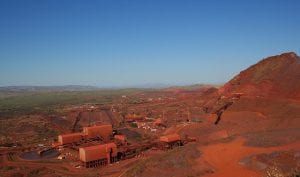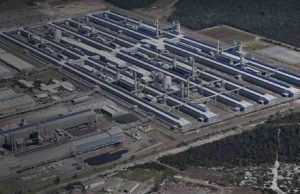Renewable energy technologies continue to nibble away at the dominance of coal and fossil gas on Australia’s main grid, setting a new record for instantaneous share for the 3rd time this week.
According to data provided by GPE NemLog, the share of renewables in the five minute period to 11.15am on Friday rose to 74.3 per cent, just edging the record set on Tuesday, which in turn had easily broken the previous record set a day earlier.
Again it was dominated by rooftop solar, which accounted for 44 per cent of total grid demand at the time.
Those records noted by GPE are on a five minute trading basis, but the Australian Energy Market Operator also confirmed this week that on a 30-minute basis that it monitors that renewables had set a new record of 73.87 per cent at 11.30am on Tuesday.
The market operator is busily preparing, via an engineering roadmap, to ensure that all the protocols and systems services are in place to allow variable renewables – wind and solar – to reach up to 100 per cent on an instantaneous basis in coming years.
Wind and solar have, on occasions, been in a position to deliver enough power to match demand, but they have been limited by network and economic constraints, particularly the tendency by big coal generators to bid negative prices so they can keep their generators running, even when demand is falling to record lows.
However, a landmark development revealed by AGL this week – where, for the first time, it switched one of the units at the giant Bayswater coal generator on and off within a six hour period (a process it calls two-shifting) – suggests that dramatic change may be afoot.
It was previously assumed that coal generators have to be “always on”, even if many of them have learned to ramp down to just 20 per cent of their rated capacity to dance around the output of rooftop solar.
But if the AGL trials show that “two-shifting” is both technically and economically feasible, it could pave the way for the next dramatic advances in the grid – allowing for more wind and solar to be produced – as long as the market operator is happy that the essential grid services such as systems strength and fault current are still being delivered.
Some states such as South Australia often produce well in excess of 100 per cent of their demand from wind and solar, but they can do this because of transmission links to other states, and because some of the output is also stored in batteries.
It’s a different matter to get the entire grid to that level.
In other records to fall in the last 24 hours, the level of “residual demand” also hit a new low of 5,313 MW on the main grid, breaking a record set nearly a year ago.
In Queensland, currently in the throes of an election campaign that will have a significant impact on its switch from being the country’s most coal dependent state to one supplied largely by renewables, the instantaneous share hit 75 per cent for the first time on Thursday. On Friday, the level of curtailment also hit a new high.








